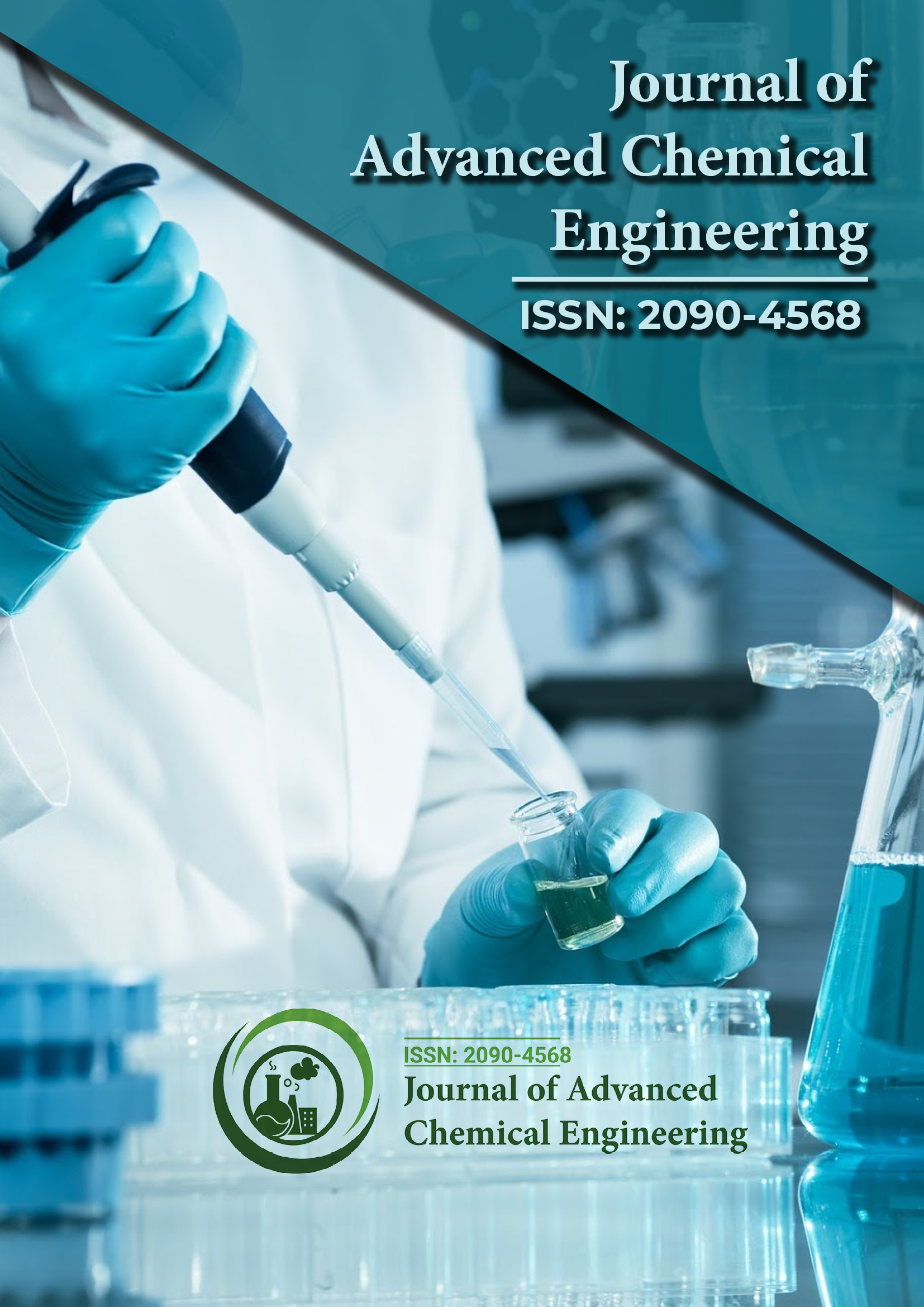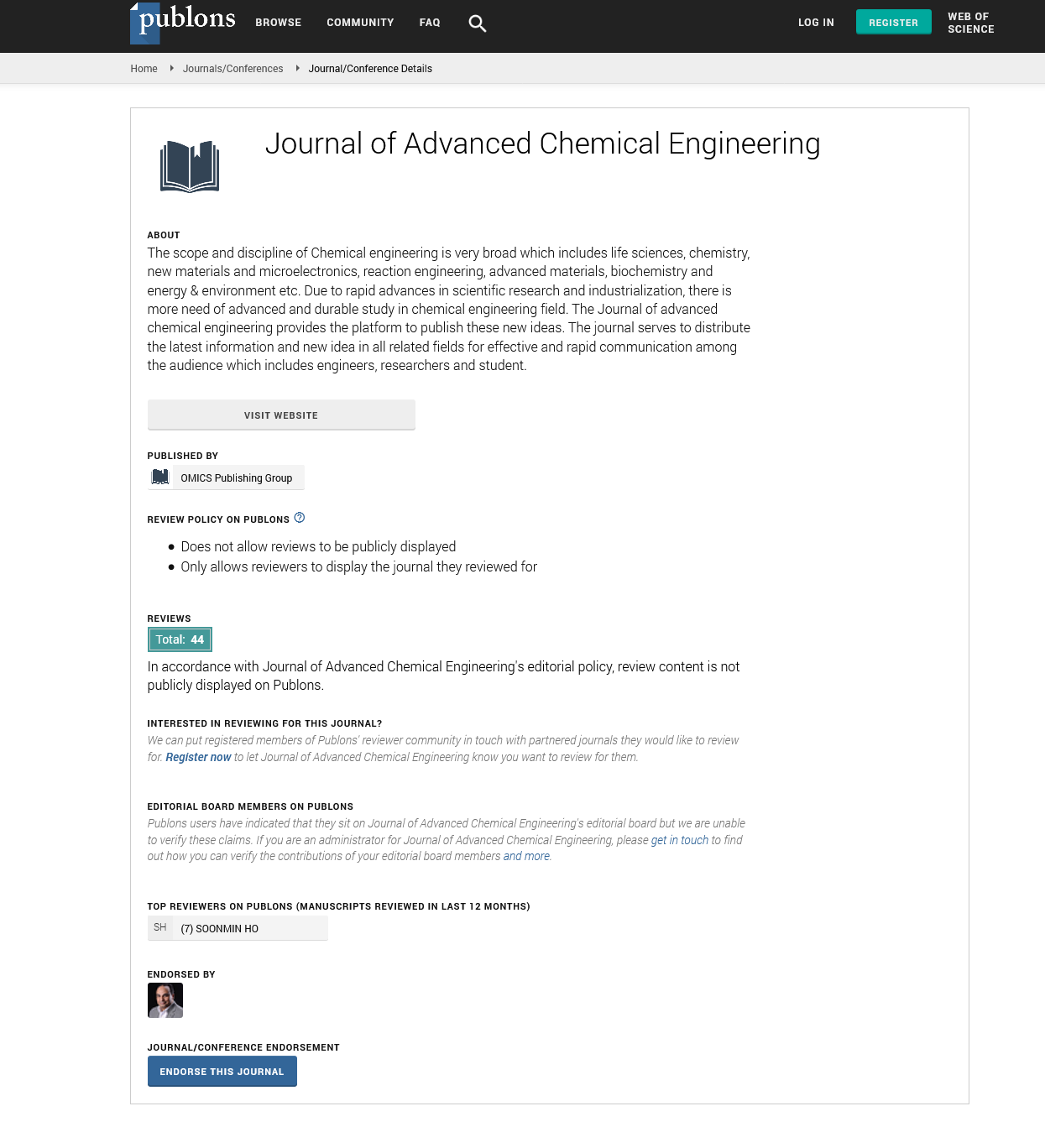Indexed In
- Open J Gate
- Genamics JournalSeek
- Smithers Rapra
- RefSeek
- Directory of Research Journal Indexing (DRJI)
- Hamdard University
- EBSCO A-Z
- OCLC- WorldCat
- Scholarsteer
- Publons
- Geneva Foundation for Medical Education and Research
- Google Scholar
Useful Links
Share This Page
Journal Flyer

Open Access Journals
- Agri and Aquaculture
- Biochemistry
- Bioinformatics & Systems Biology
- Business & Management
- Chemistry
- Clinical Sciences
- Engineering
- Food & Nutrition
- General Science
- Genetics & Molecular Biology
- Immunology & Microbiology
- Medical Sciences
- Neuroscience & Psychology
- Nursing & Health Care
- Pharmaceutical Sciences
Perspective - (2025) Volume 15, Issue 1
The Complex Chemistry and Economics of Blast Furnaces
Gwen Joe*Received: 02-Nov-2023, Manuscript No. ACE-23-23689; Editor assigned: 06-Nov-2023, Pre QC No. ACE-23-23689 (PQ); Reviewed: 20-Nov-2023, QC No. ACE-23-23689; Revised: 09-Jan-2025, Manuscript No. ACE-23-23689 (R); Published: 16-Jan-2025, DOI: 10.35248/2090-4568.25.15.355
Introduction
Blast furnaces stand as iconic symbols of industrial might, playing a pivotal role in the production of iron and steel. These colossal structures are at the heart of the iron-making process, transforming raw materials into molten iron with remarkable efficiency. In this comprehensive article, we delve into the significance and performance of the blast furnace, shedding light on its historical importance, the complex processes it houses, and its continued relevance in today's industrial landscape.
Descripition
The historical significance of the blast furnace is deeply intertwined with the evolution of human civilization. While early iron production dates back to ancient times, the development of the modern blast furnace marked a turning point in the industrial revolution. These towering structures enabled the mass production of iron and steel, which, in turn, spurred advancements in technology, infrastructure, and global trade. The ability to produce iron in large quantities had profound implications for construction, transportation and warfare, transforming the landscape of human society.
At its core, a blast furnace is a towering structure designed for the smelting of iron ore into iron. The iron-making process that occurs within the blast furnace is a complex sequence of chemical and physical transformations, each of which is critical to the overall performance of the furnace.
The first step in the process involves the preparation of raw materials. Iron ore, typically in the form of Hematite (Fe2O3) or Magnetite (Fe3O4), is combined with coke (a derivative of coal) and limestone. These materials are meticulously proportioned and fed into the top of the blast furnace.
Once inside the furnace, the iron ore undergoes a series of reactions. The intense heat, generated by burning coke, triggers the reduction of iron ore to its metallic form. Carbon monoxide, produced from the combustion of coke, acts as the reducing agent in this reaction, stripping oxygen from the iron ore and leaving behind molten iron and carbon dioxide. This molten iron accumulates at the bottom of the furnace, forming a pool known as "hot metal."
Simultaneously, the limestone added to the furnace serves multiple purposes. It acts as a flux, aiding in the removal of impurities from the iron ore, while also promoting the formation of a slag layer. The slag, which is less dense than molten iron, floats on top of the hot metal, acting as a protective cover that prevents the re-oxidation of iron and further refining the iron product.
The hot metal, once accumulated in sufficient quantities, is periodically tapped from the furnace through a tap hole at the base. The molten iron is then directed to various downstream processes, such as steelmaking or casting, where it is further refined and transformed into a wide range of iron and steel products.
Throughout this process, the performance of the blast furnace is influenced by numerous factors, each of which contributes to its efficiency and reliability. The temperature within the furnace is carefully controlled to ensure the optimal conditions for iron reduction. The quality of the raw materials, including the iron ore, coke, and limestone, directly impacts the yield and quality of the hot metal produced.
The performance of the blast furnace is also closely tied to the quality of the coke used as fuel. The coke must be carefully prepared to possess the necessary properties, including high carbon content and low impurity levels. The choice of cooling methods for the hot metal, as it is tapped from the furnace, can affect the overall performance and energy efficiency of the ironmaking process.
Furthermore, the lifespan of a blast furnace depends on the management of wear and tear. Over time, the intense heat and chemical reactions within the furnace lead to erosion and degradation of the refractory lining. Maintenance and repair of the lining are essential to extend the life of the blast furnace.
The significance of the blast furnace extends beyond its historical role and technical intricacies. These industrial behemoths continue to be crucial players in the global steel production landscape. The blast furnace method remains a costeffective and reliable means of producing iron and steel, particularly on a large scale.
Despite the advent of alternative iron-making technologies, such as electric arc furnaces and direct reduction processes, blast furnaces continue to dominate global iron and steel production. This is due in part to their ability to efficiently produce highquality iron from a wide range of iron ore sources, coke, and auxiliary materials.
The economics of blast furnace operation are influenced by various factors, including the availability and cost of raw materials, energy prices, and environmental regulations. In recent years, there has been a growing emphasis on improving the environmental performance of blast furnaces by reducing emissions and increasing energy efficiency. Technologies such as Carbon Capture and Utilization (CCU) are being explored to mitigate the carbon dioxide emissions associated with coke combustion.
Conclusion
In conclusion, the significance and performance of the blast furnace in the realm of iron and steel production are undeniable. These towering giants have left an indelible mark on the course of human history, driving industrialization and technological advancement. Today, as the world seeks to balance the demand for steel with environmental responsibility, the continued relevance and adaptability of blast furnace technology are evident. The ongoing quest to enhance their efficiency and sustainability reflects the enduring importance of these industrial marvels in our modern world.
Citation: Joe G (2025) The Complex Chemistry and Economics of Blast Furnaces. Adv Chem Eng. 15:355.
Copyright: © 2025 Joe G. This is an open-access article distributed under the terms of the Creative Commons Attribution License, which permits unrestricted use, distribution, and reproduction in any medium, provided the original author and source are credited.

